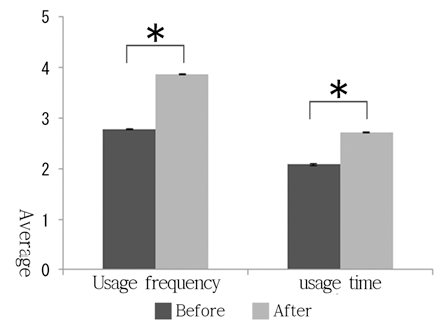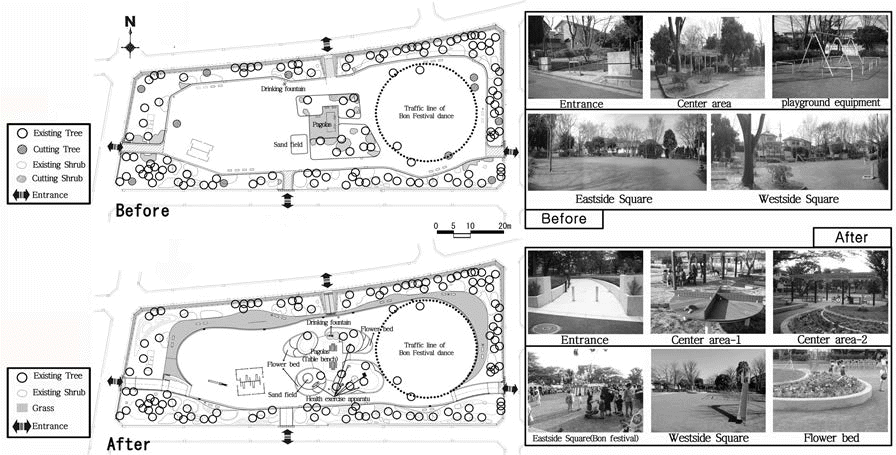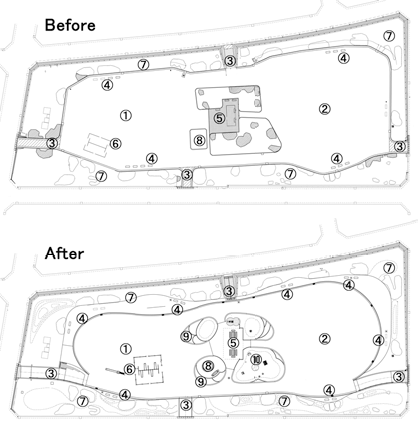Ahn H.J. Research for regeneration method of major cities -Subject to Geum gang Park-. PhD dissertation. Pusan National Univ. Pusan. Korea 2005.
Amano Y, Masato D.H. Design features of participatory renewal process on Narai-park Okazaki city, Aichi pref. Journal of the Japanese Institute of Landscape Architecture 2002;65(5): 731ŌĆō734.

Asada T.S. Environmental development theory. Kajima Institude Publishing Co. Ltd 1969.
Cho D.H. A study on plan of the resident participation park remodeling focused on the participatory design techniques in community. MS thesis, The University of Seoul, Seoul, Korea 2008.
Hong S.K, Lee M.W, Lee S.M, Ahn M.J. Searching for facilities and service programs for the establishment of urban park identification. Journalof the Korean Institute of Landscape Architecture 2007;35(5
): 29ŌĆō36.
Ihara Y. The historical research on how the cultural heritage opened to the public and changed over time in the Tamamo-park. Journal of the Japanese Institute of Landscape Architecture 2004;67(5): 387ŌĆō392.

Ihara Y. The historical research on how the cultural heritage opened to the public and changed over time in the Ritsurin-park. Journal of the Japanese Institute of Landscape Architecture 2005;68(5): 389ŌĆō394.

Jung J.W. Reproduction of children's park through visitors participation. MS thesis, Chonnam National Univ., Gwangju 2009.
Kaga H.Y, Machi Y.S, Shimomura Y.H, Masuda N. A study on the change of the old resident's favorite open space and trees between before and after replacing housing estates. Journal of the Japanese Institute of Landscape Architecture 2004;67(5): 697ŌĆō702.

Kaneko T.K. Draft planning guideline for extending the lifetime of park facilities. Environmental Information Science 2013;42(1): 34ŌĆō37.
Kong Y.K, Yang H.S. The greative regeneration and daily life on urban park -the case of jeonpodolsan park in busan -. Journal of the Korean Association of Regional Geographers 2011;17(5): 582ŌĆō599.
Nishisaka R.K, Tahara N.K, Kamihogi A.H. A study on existence situation and use realities of regional resources in city park. Journal of the Japanese Institute of Landscape Architecture 2008;71(5): 615ŌĆō618.

Noda H.S. Process of partnership formation : A case study on the citizen participation to the planning and management of a park in Yokohama- city. Technical Report of Kyoto Prefectural University 2003;55:247ŌĆō259.
Oh E.S, Yeom S.J, Kinoshita T. Research of relationship between change of spatial composition utilization pattern and satisfaction by park regeneration. Journal of the Japanese Society of Revegetation Technology 2011;37(1): 257ŌĆō260.

Oh E.S, Ikebe T.K, Yeom S.J. A Study on the changes of utilization and spaces in regenerating urban small park. Journal of the Japanese Institute of Landscape Architecture 2012;75(5): 471ŌĆō476.

Sano K.N. Regeneration of hinokicho park -Tokyo midtown preject and park regeneration-. Urban Park 178:47ŌĆō51.
Seo J.Y, Sung H.C. A study on the user's actual condition and analysis of spatial organization on the urban park - focusing on lawn and green areas-. Journal of the Korea Society of Environmental Restoration Technology 2009;12(6): 99ŌĆō111.
Shinobe H, Sunamoto F.H, Kato S.N. A study on method of architectural professional education connected with the local community case study of houei-higashi park redesign in kure city. Journal of the Architectural Institute of japan 2003;18:399ŌĆō402.
Shirahata Y.B. Research of modern urban park history. Shibunkaku Publishing Co. Ltd 1995.
Yagome Y.T, Kanno H.T. A quantitative analysis of the exterior spaces in kodan housing areas to consider their use as an urban environmental resource. Journal of the Japanese Institute of Landscape Architecture 2011;74(5): 663ŌĆō666.

Yamaguchi Y.T, Koura H.K. Study on evaluation of regional resources and building use in center shopping street in local city : In case of the downtown of Hyogo Prefecture Toyooka City. Architectural Institute of Japan, Kinki Branch 2008;48:429ŌĆō432.
Yasutsune M. A case study on the citizen participation to the regenerating for a park in Fukuoka-city. Memoirs of the Chikushi Jogakuen University 2010;5:163ŌĆō173.













